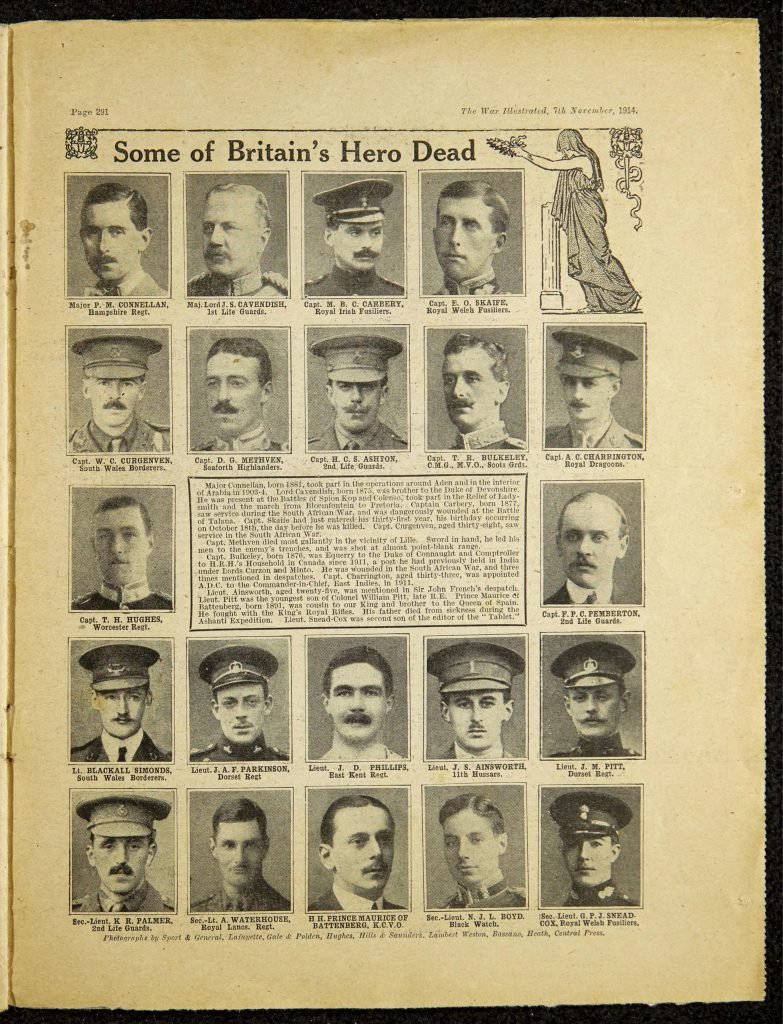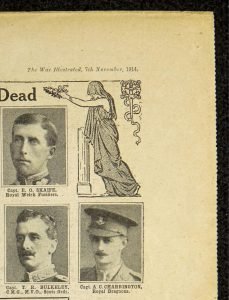

We are very excited that the University of Kent’s National Lottery Heritage Funded project ‘Digitizing The War Illustrated’ will make these important world war I magazines available online. I’m in the process of writing a handout for our first workshop (the content will also be available on this blog in due course) and wanted to share a few insights as to what the archive has to offer.
The archive rewards both casual browsing and more focused searching. Searches are especially aided by the high-quality digitization which means that the percentage of words accurately captured by Optical Character Recognition (OCR) is impressive.
To start with, I have turned to the August to December 1914 section on the Internet Archive, which can be found here.
While the magazine collection will now be available worldwide, I thought that since NoRMMA is largely based at the University of Kent in Canterbury, it would be nice to focus on some local aspects.


Searching for the term ‘Kent’ yielded this word in several contexts. This blog post concentrates on the pages of The War Illustrated which lists soldiers who have been wounded or killed. On the 19th of September 1914 there is the news that Lieut B.C.C. Sewell of the Royal West Kent Regiment has been wounded. The following week, the search for ‘Kent’ uncovers that a member of the Hampshire regiment with this surname, Lieut E.M.S. Kent, has sadly been killed. Three consecutive issues of the magazine from November list more men who have died for their country: Lieut J.D. Phillips of the East Kent Regiment (7th November), Lieut M.W. Broadwood of the Royal West Regiment (14th November) and Sec-Lieut G.T. Gross of the Royal West Kent Regiment and Sec-Lieut Mervyn Noott of the East Kent Regiment (21st November).

Although this is not an examination of all the weekly pages which honoured the war injured or dead, the change in focus is telling. The men listed in the 19th of September issue appear under the headline ‘The Price That Must Be Paid For Freedom: Some Gallant Officers Who Have Bled For Britain’ and includes a double page of those injured as well as those killed. By the 7th of November, only ‘Some of Britain’s Hero Dead’ are listed: this shifts focus to not just bloody, but fatal, battles.

As well as the move to depicting those who have been killed, the presence of a female figure at the top right-hand corner is worth further consideration. She contrasts to the men pictured in several significant ways. While the men are photographed and pictured head-on, she is an illustration and turned away from us. This means that her features cannot be seen, and she is not an identifiable figure (she has no name or rank). Rather she is the eternal woman (such a view consolidated by her classical clothing and magnified by the same illustration appearing week after week), a surrogate for all womankind. Since she is the sole representative of her gender, her pose is significant. The fact she does not face frontwards does not only obscure her identity it shows her as submissive rather than combative.
This points to The War Illustrated’s clear delineation of the sexes. But the pages dedicated to the war dead are notable for another absence: only ‘gallant officers’ are present. Further investigation of the magazine’s inclusion of particular ranks, as well the regiments – e.g. the East Kent and the Royal West Kent – tells us more about the men who fought in World War I. We can also usefully reflect on whose stories are chosen for inclusion, and how these are told.
I’ll be posting more about the collection soon. If you’d like to attend our first workshop at the University of Kent in Canterbury on the 27th of June email us on normma.network@gmail.com to book a place. See more information here.
